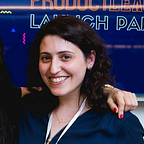How to deliver value to users in just 2 days
Two months ago I was looking at my product backlog and I was feeling depressed. There were so many great features there that would make my users happy waiting to be implemented, but I was unable to deliver them.
Every product manager knows that frustrating feeling of looking through a backlog of awesome ideas, or scanning through your users’ feature requests, and not being able to prioritize anything because you need to hit specific KPIs. This is exactly where I was. We were chasing big revenue-increasing initiatives for a while, working hard to deliver value behind the paywall, but we were neglecting the value before the paywall.
“What if I could get them implemented, outside of the sprint?” is the thought that got my brain moving. What if I could get my development team working on something outside of the scope, just for a few days. Something like a mini sprint, or better yet — a hackathon. Jackpot.
When you think of a hackathon you are probably thinking about a competition style event where you have to build a new product from scratch in 24–48 hours. Usually you get a brief and that’s it, each team needs to realize what to build.
Well my hackathon was a bit different:
- I prepared a bank of 17 features, small enough to take less than 2 days of dev work. Some tasks were well defined and had designs, but most were vague and just gave a general description. Almost all were feature requests made by our users.
- The R&D team was split into 4 teams, each had 2 devs + user-facing employee, like a PM, designer or someone from Customer success.
- Each team had to choose which tasks they will commit to complete in the 2 days hackathon, if they succeed — they get points. If they miss, points will be deducted. The team with the most points at the end of the event — wins.
- Each task was given a complexity score between 10 (not complex) to 100 (very complex) and an impact score between 10 (low impact) to 100 (high impact). The final score for each feature was the sum of the two scores.
- Each team was also able to get bonus points, up to 50 points for each team, for going above and beyond with creativity and value to customers.
- To qualify for points features are required to be ready for deployment, meaning they should be verified, tested for bugs and already in staging. If a task is not ready to be deployed, it will not count as completed and the teams will lose points.
We kicked off the event early in the morning, with some branded swag and breakfast to get people hyped. After a short overview of the rules and tasks, each team had to choose their strategy and pick their tasks. Are they going to pick multiple small tasks worth less points, or take on bigger tasks worth more points that are riskier to complete in 2 days? After that, it was game on.
We opened a Kanban board with all the tasks so teams can see where their competition is in the development process. Each team started working, dividing the work between them.
By the end of the second day, the 4 teams were able to build 12 out of the 17 features! We finished the hackathon off with a nice dinner and a demo session, where each team had to show what they built. Then we summed up the points and announced the winners.
The result was beyond my wildest expectations. Not only were we able to release 12 new features that users love (they really do, we got feedback!), the morale in the company was incredible, and the development team was so proud of what they built. I’m so happy that I have the chance to work for a company that allows me as a VP Product to try new things and think outside of the box. And to think that if these 12 tasks were added to sprints it could have taken us 6 months to release them…
To summarize:
🏆 Hackathons don’t have to be about big problems and complex solutions.
🍇 These low hanging fruit features you have stuck at the bottom of your backlog, don’t have to be stuck.
🗒️ Prepare a list of small and valuable enough features that you want to build, and get your hackathon ready.
✨ Don’t define these features all the way, leave room for creativity!
🚦 Each task should get different points based on how complex it is and how much impact it can have on the business or to users.
🍰 Let the teams choose their strategy, are they going to take on a lot of small tasks or a few big ones?
🍪 Hype them up with some swag, good food and healthy competition :)
👫 Make sure to include other team members who continually interact with users, like PMs, designers or CS, they should be the voice of the customer and help devs make sure they don’t miss the value part.
Want to try running a similar hackathon at your company? Click here to see the presentation summarizing the rules of our hackathon.
